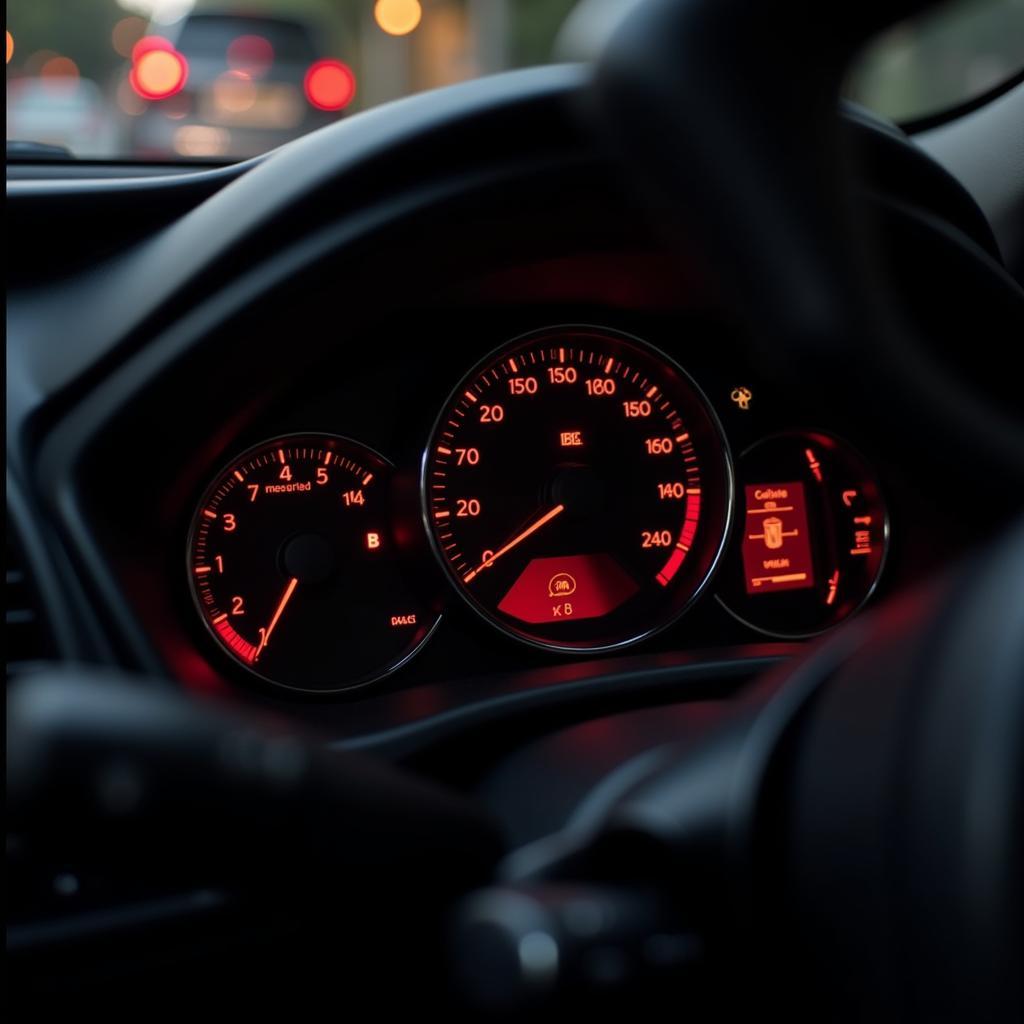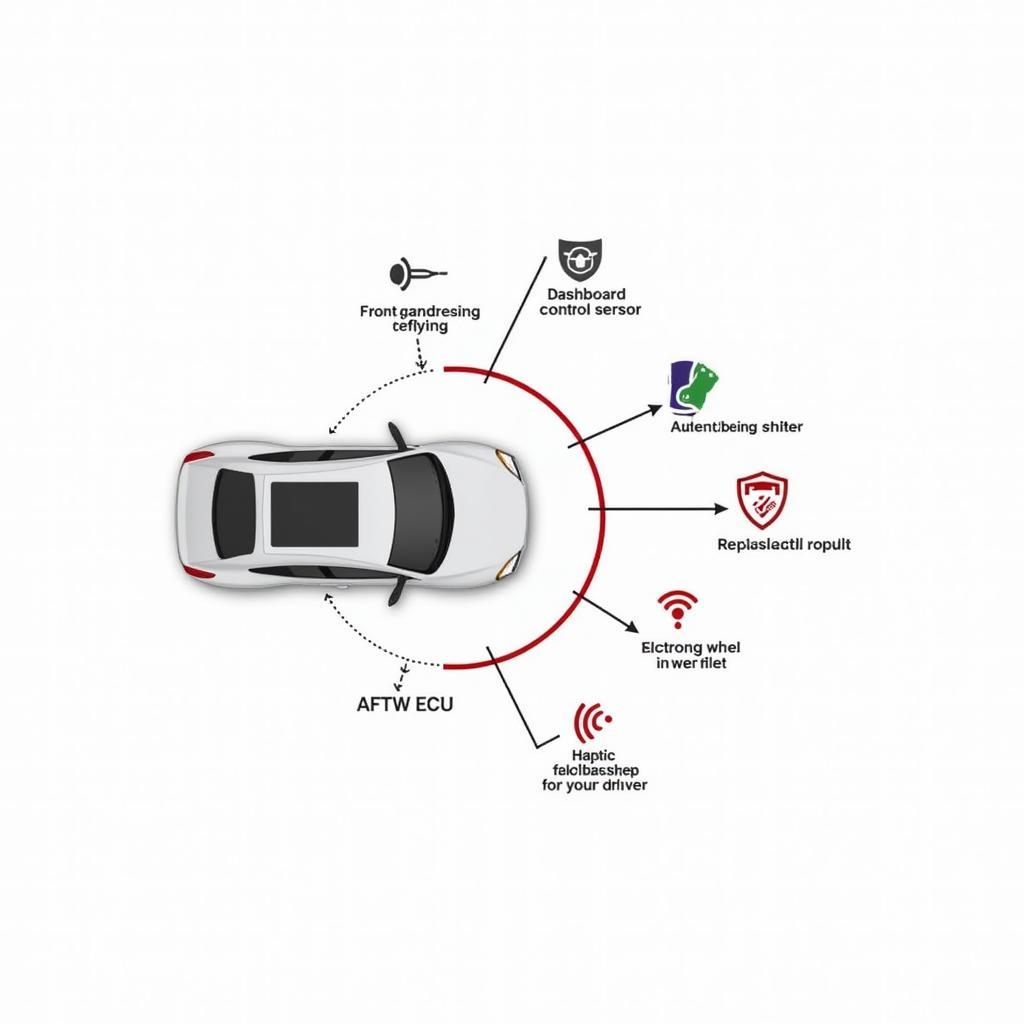That little yellow or red light that popped up on your dashboard – the one shaped like a circle with parenthesis around it and an exclamation mark? That’s your brake pad warning light. And it’s trying to tell you something important: it’s time to pay attention to your brakes. Ignoring this warning could lead to costly repairs and, more importantly, compromise your safety on the road.
Deciphering the Brake Pad Warning Light
Your car’s brake system is designed with your safety in mind. The brake pad warning light is a key part of that system, alerting you to potential problems before they become serious. Let’s break down what it’s trying to communicate:
- Worn Brake Pads: The most common reason for the warning light is worn-out brake pads. Brake pads have wear indicators, small metal tabs that make contact with the rotor when the pads are getting thin. This contact creates a high-pitched squealing sound, acting as an audible warning. If ignored, the light on your dashboard will illuminate.
- Low Brake Fluid: Another possible culprit is low brake fluid. Your car needs a certain amount of brake fluid to function properly. If the fluid level drops too low, it could be a sign of a leak in the system, potentially leading to brake failure.
- Faulty Brake System Sensor: In some cases, a malfunctioning sensor could trigger the warning light even if there’s nothing wrong with your brake pads or fluid level. This is why it’s essential to get your car checked by a professional.
What Happens If I Ignore the Brake Pad Warning Light?
Ignoring the brake pad warning light is like ignoring a toothache – it might seem like a minor annoyance at first, but it can quickly escalate into a major problem.
Here’s what you risk:
- Reduced Braking Power: Worn brake pads mean less friction, resulting in longer stopping distances. This is extremely dangerous, especially in emergency situations.
- Damage to Rotors: Driving with worn brake pads can damage the brake rotors, leading to expensive repairs.
- Complete Brake Failure: In extreme cases, ignoring the warning light can lead to complete brake failure, putting you and others at serious risk.
 Comparison of Worn Brake Pads and New Brake Pads
Comparison of Worn Brake Pads and New Brake Pads
What to Do When the Brake Pad Warning Light Comes On
The moment you see that warning light, here’s what you should do:
- Don’t Panic: While it’s important to address the issue promptly, don’t panic. Pull over to a safe location when it’s safe to do so.
- Check Your Brake Fluid: If you’re comfortable doing so, check your brake fluid level. Consult your owner’s manual for instructions. If the fluid level is low, it’s crucial to get your car to a mechanic immediately.
- Schedule an Inspection: Even if your brake fluid level seems fine, it’s still essential to have your car inspected by a qualified mechanic as soon as possible.
“Remember, regular maintenance is key to preventing brake problems,” advises John Smith, Senior Automotive Technician at ABC Auto Repair. “Don’t wait for the warning light to come on. Have your brakes inspected at least once a year or as recommended in your owner’s manual.”
Remote Diagnostics and Software Solutions: The Future of Car Repair
In today’s tech-savvy world, even car repairs are getting a digital upgrade. Remote diagnostics and software solutions are transforming the way we approach car problems, and brake issues are no exception.
chevy truck brake warning light stays on can now be diagnosed and even repaired remotely using advanced software and diagnostic tools. This means quicker, more efficient solutions without the hassle of multiple trips to the mechanic.
Conclusion
The brake pad warning light is your car’s way of saying, “Hey, let’s pay attention to the brakes!” Don’t ignore it. By addressing the issue promptly, you’ll ensure your safety on the road and potentially save yourself from costly repairs down the line. Remember, a little preventative maintenance goes a long way.


